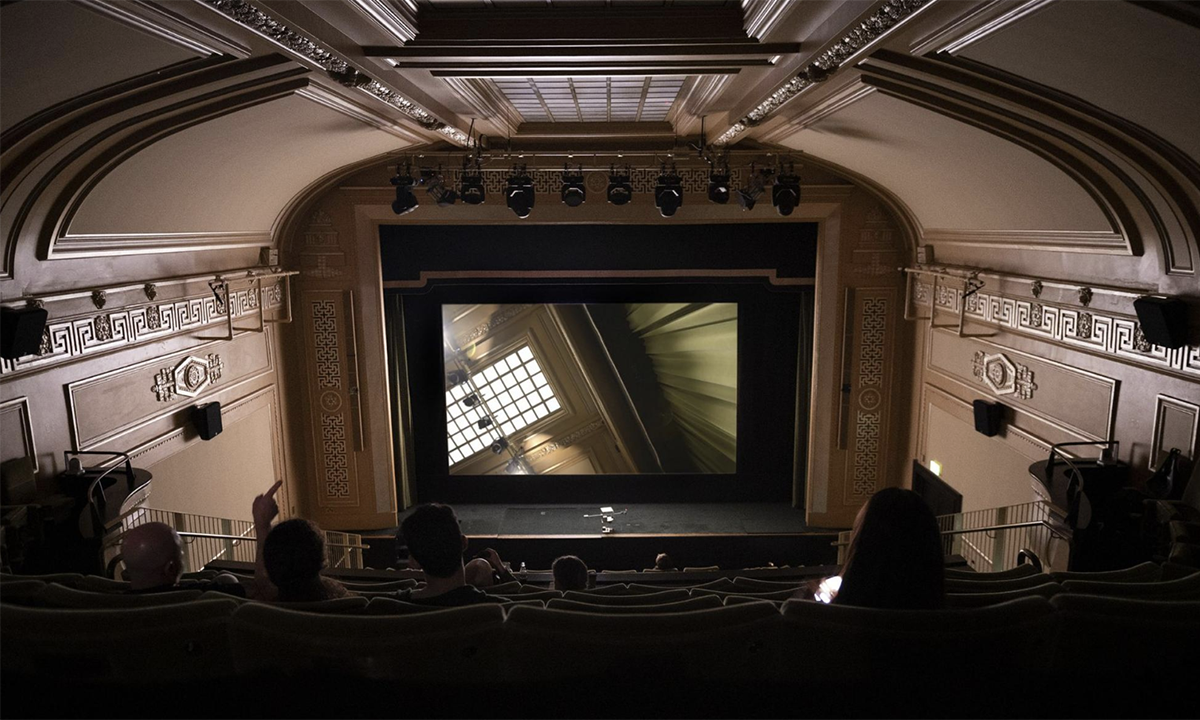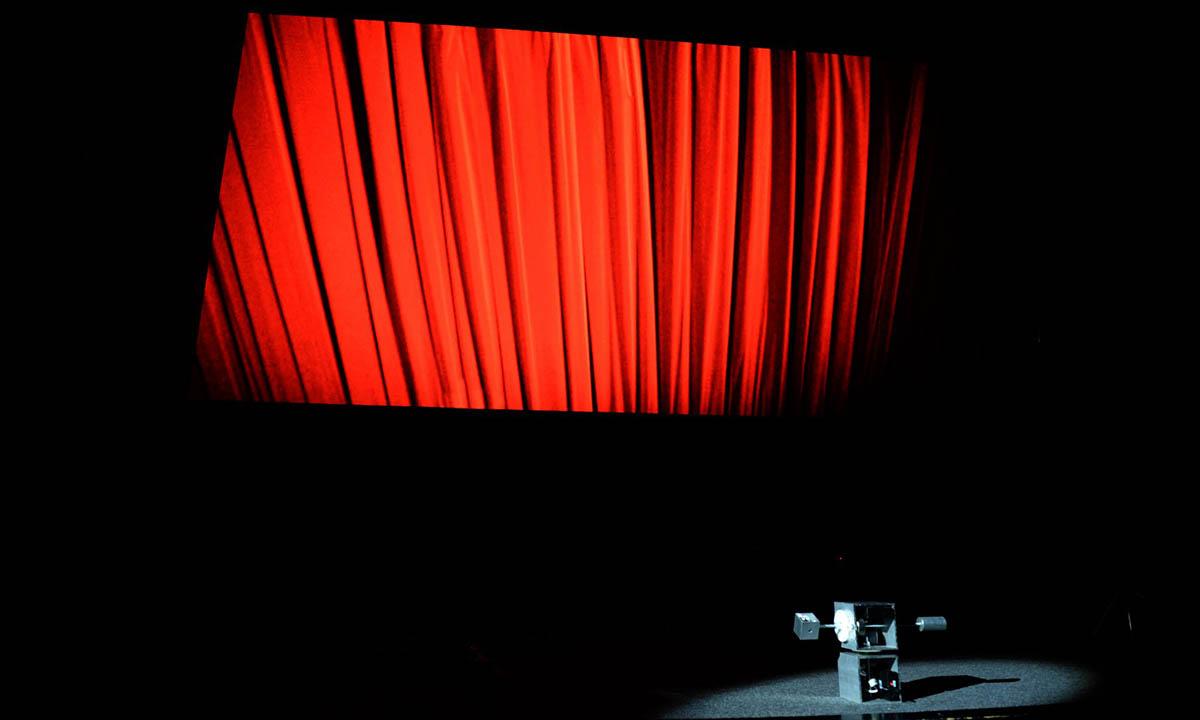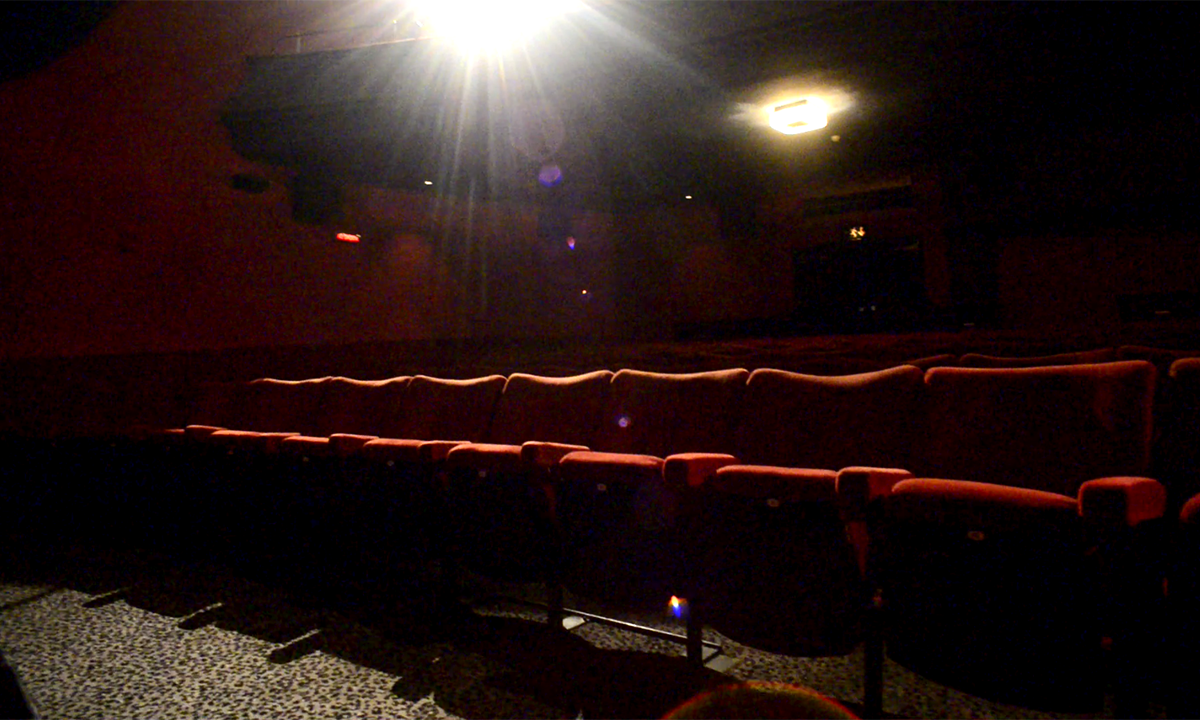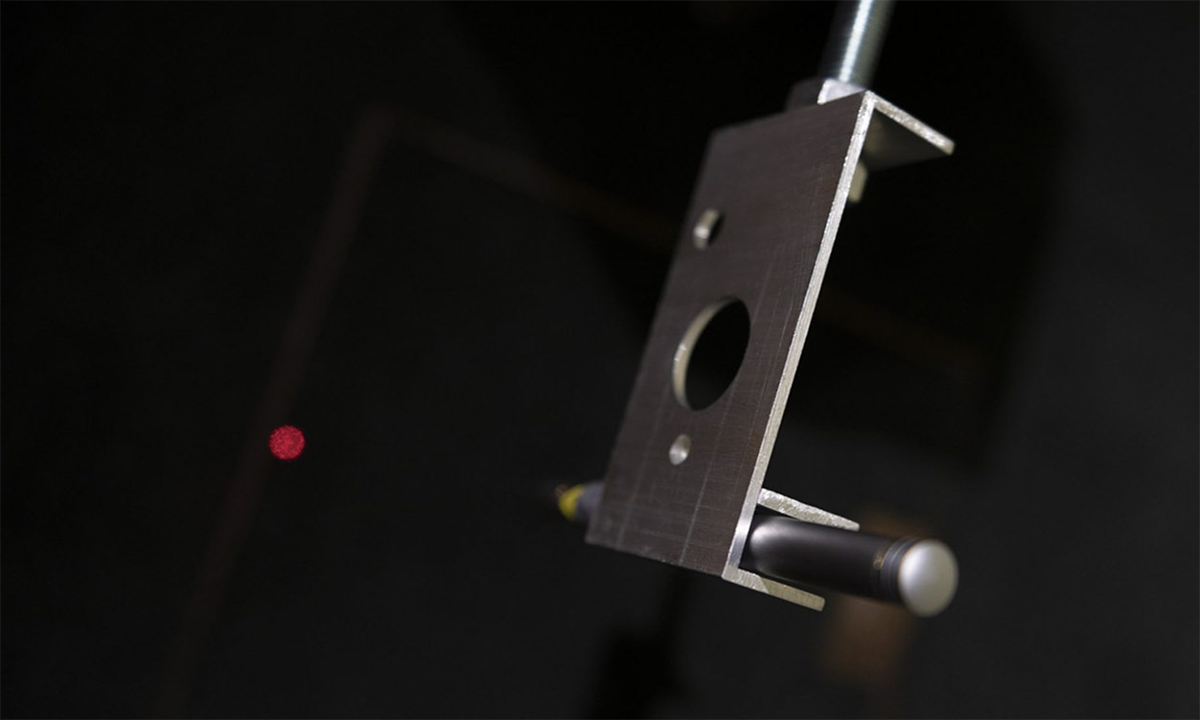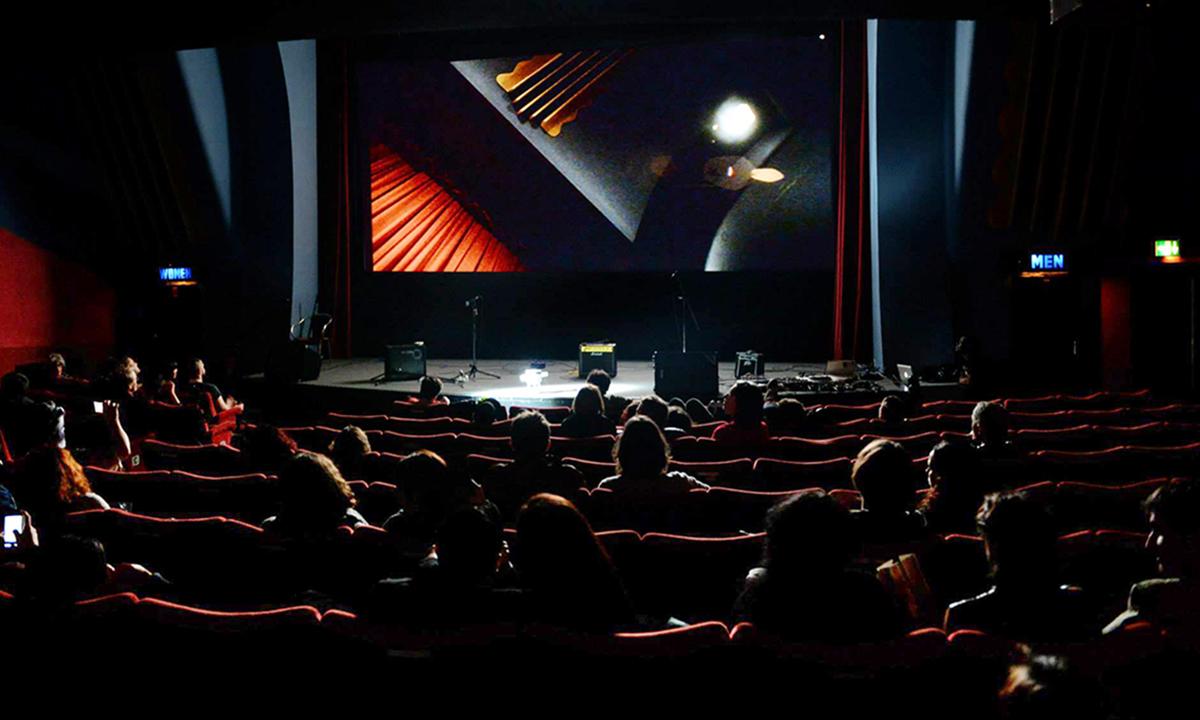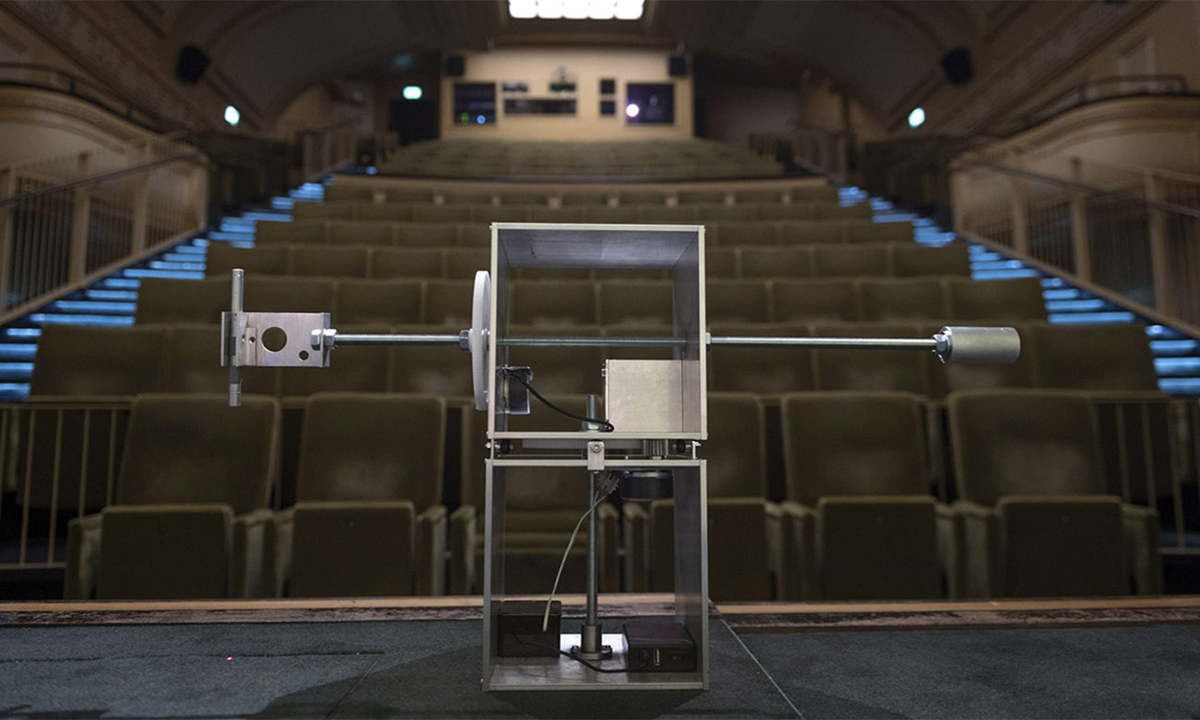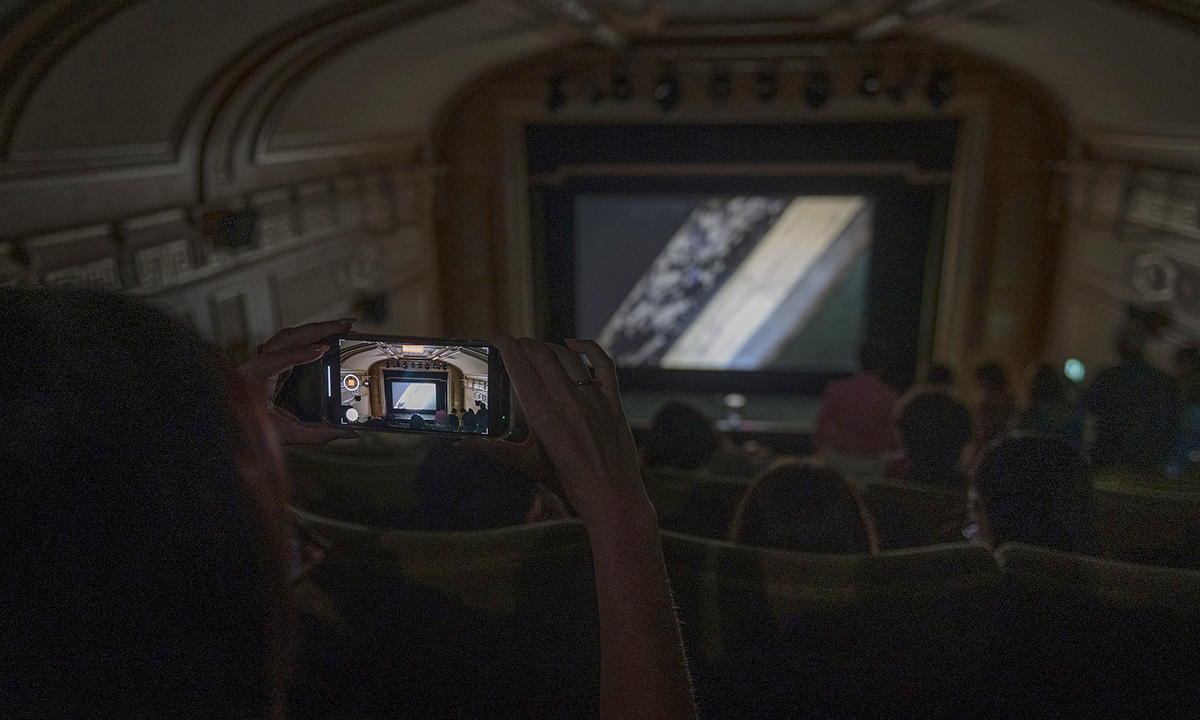Siting Cinema visually explores the cinema space as a site through a series of film installations created in independent art cinemas across the UK. At a time when cinema as an industry faces significant threats, Siting Cinema celebrates this vital social practice by focusing the audience’s attention on the physical environment they inhabit. It interrogates the physical and perceptual relationship between the viewer and the cinema as site, where the screen, mechanical rig, and audience position become integral elements of the experience.
Audiences are compelled to actively look, engage, and inhabit the site. Each cinema is first filmed with a 360-degree camera, capturing every detail of the empty architectural space under house lights with the curtains drawn closed. This pre-recorded footage is then projected onto the cinema's own screen, creating a layered viewing experience. A tension emerges between the camera’s singular viewpoint and the space it traverses. Rather than focusing on what the rig means for the camera itself, Siting Cinema reorients attention to how this technology enables new perceptions and experiences of the cinema space. The same rig is then repurposed: the camera is replaced with a laser, which traces the original camera movements within the auditorium.
More Info
As the audience attempts to ‘map’ the projection to the laser’s path in the real space, a complex relationship unfolds between artwork, audience, and site. Here, the projected image serves a dual function: it anchors the audience within the familiar space, while simultaneously disorienting them, inviting a re-encounter with the cinema’s architecture. Physical space, usually a static environment for passive occupation, is transformed into a dynamic, activated live site. Watching and representing collapse into one another. The audience becomes acutely aware of their own presence both within the actual room and within the filmed projection, engaging with a device that records the past while performing in the present. Crucially, the recording rig is not a hidden or secondary tool. It is central to the artwork’s site-specific nature — its performance, rather than being concealed, is foregrounded as an essential part of the experience.
I became part of the cinema and film through a machine that recorded the space in the past and acted in the present. The space was no longer a motionless entity that I could explore or passively inhabit, but it became ‘activated’. (Audience feedback)
Traditionally the cinema audience is lost in narrative time as Malcolm Le Grice states, “Everything possible is done to reduce awareness of the actuality of the screening time and space … the seats are soft, the sound surrounds, the screen fills the visual fields, all reducing awareness of our actual physical presence to the minimum”. (Le Grice, 2001). Siting cinema reverses this priority, forcing the viewer to actively look, engage and experience the physical site of the cinema auditorium.
